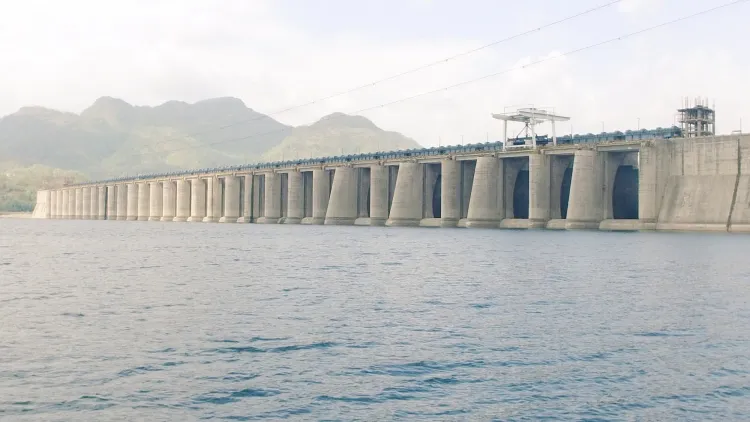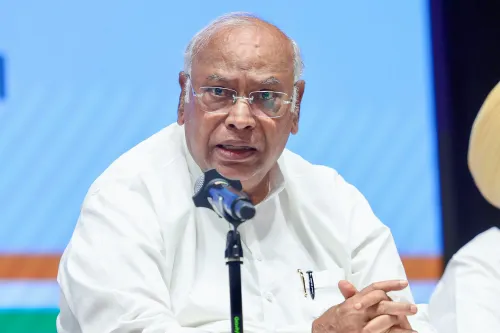How Have Widespread Rainfalls Impacted 76 Dams in Gujarat?

Synopsis
Key Takeaways
- 76 out of 207 dams are at high alert due to heavy rainfall.
- 68.91% of average seasonal rainfall has been recorded in Gujarat.
- Kharif sowing is over 87% complete, boosting agricultural productivity.
- Fishermen are advised not to go to sea until August 21.
- Gujarat's average annual rainfall has increased by 11% over the past decade.
Ahmedabad, Aug 18 (NationPress) Intense monsoon rains across Gujarat have caused a remarkable increase in the water levels of the state's reservoirs. As of August 18, 76 out of Gujarat's 207 dams -- including the crucial Sardar Sarovar -- are currently between 70% and 100% of their storage capacity, placing them on ‘high alert.’
Moreover, 26 dams are on ‘alert’ and 22 are categorized as ‘warning.’ The Sardar Sarovar Dam alone holds 76.40% of its total capacity.
According to the State Emergency Operation Centre (SEOC), Gujarat has received 68.91% of its average seasonal rainfall to date, with South Gujarat experiencing the highest at 72%, followed by North Gujarat at 71%, Kutch at 70%, East-Central Gujarat at 69%, and Saurashtra at 63%.
In the last 24 hours, significant rainfall was recorded in various locations, with Dhoraji in Rajkot receiving over 3 inches, Malia-Hatina more than 2 inches, and over 1 inch in 24 additional talukas.
This rainfall has greatly enhanced agricultural activities, with kharif sowing completed on over 87% of the arable land in the state. Groundnut has been planted across 20 lakh hectares, cotton on 27.3 lakh hectares, and paddy in 8.43 lakh hectares, as reported by the Agriculture Department.
Meanwhile, the IMD has warned fishermen to avoid venturing into the sea between August 18 and 21 due to adverse weather conditions.
Over the last decade, Gujarat has witnessed a significant increase in average annual rainfall, rising from approximately 797 mm (1985-2014) to 882 mm (1995-2024), reflecting an increase of around 11%, with Kutch experiencing the steepest rise at 25% and Saurashtra at 15%.
This trend has been coupled with increasingly intense and erratic rainfall patterns, affecting the regional climate dynamics -- 12 out of 33 districts now receive over 50% more seasonal rain compared to the 2014-23 average, with Devbhoomi Dwarka experiencing a remarkable 135% surge.
Historical analyses dating back to 1871 indicate that the long-term average annual rainfall stands at 839 mm, with July typically accounting for about 329 mm or nearly 40% of the seasonal total. These shifts are increasingly impacting agriculture, water management, and urban planning, necessitating stakeholders to embrace adaptive strategies such as enhanced drainage, strategic crop planning, and climate-resilient infrastructure.









